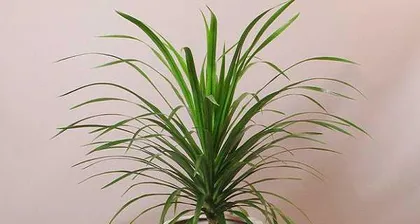As a tropical plant, the Hainan dragon's blood tree is highly favored for its unique ornamental and medicinal value. However, due to the particularity of its growing environment and high difficulty in cultivation, many people often fail when caring for it. Therefore, this article will introduce the cultivation methods and precautions for the Hainan dragon's blood tree, hoping to provide some help for enthusiasts.

I. Choosing a Suitable Growing Environment
When cultivating the Hainan dragon's blood tree, the first consideration is the growing environment. The Hainan dragon's blood tree prefers a warm and humid climate, with a suitable growth temperature of 20-35°C. When choosing a planting location, select a place with plenty of sunlight, suitable temperature, and high humidity.
II. Selecting Quality Seedlings
Selecting good seedlings is crucial for the growth of the Hainan dragon's blood tree. When purchasing seedlings, choose those that are healthy in appearance, with lush branches and leaves, and well-developed roots. Avoid selecting seedlings with pests, diseases, or poor growth.

III. Reasonable Watering
The Hainan dragon's blood tree has high water requirements, but it is also important to water it reasonably. In the initial stage of growth, it needs watering 1-2 times a day, but be careful to avoid overwatering and waterlogging. In winter or low-temperature environments, the amount of watering should be appropriately reduced.
IV. Regular Fertilization
The Hainan dragon's blood tree prefers soil rich in organic matter, so regular fertilization is required during cultivation to ensure its healthy growth. Generally, fertilize once a month in spring and autumn, and twice a month in summer and winter.
V. Pruning in a Timely Manner
For the Hainan dragon's blood tree, timely pruning can help it maintain a beautiful shape, enhance light penetration, and promote new branch growth. When pruning, be sure to use appropriate tools to avoid damaging the trunk and branches.

VI. Pest and Disease Control
When caring for the Hainan dragon's blood tree, it is necessary to inspect it regularly to detect harmful pests and diseases and take timely measures for prevention and control. Common pests and diseases include powdery mildew, aphids, and stem rot. They can be controlled by spraying pesticides or wiping and cleaning.
VII. Avoiding Over-transplanting
Over-transplanting can cause great harm to the Hainan dragon's blood tree, so it is important to choose a suitable time and method for transplanting and avoid frequent moving.
VIII. Paying Attention to Reasonable Pairing
The Hainan dragon's blood tree can be planted alone or paired with other plants. When pairing, pay attention to the similarity in growth habits, flowering periods, and soil requirements of the plants to avoid affecting the Hainan dragon's blood tree.
IX. Proper Sunshade
During the summer with intense sunlight, appropriate sunshade measures can be taken to avoid excessive sunburn and dehydration. However, it is also important to ensure light penetration and avoid blocking too much sunlight.
X. Maintaining Good Ventilation
The Hainan dragon's blood tree prefers a well-ventilated environment. During cultivation, maintain good ventilation to avoid high humidity and poor air circulation.
XI. Preventing Strong Wind Damage
When encountering severe weather such as typhoons or storms, take protective measures to prevent the Hainan dragon's blood tree from being uprooted or broken by strong winds.
XII. Paying Attention to Loosening the Soil
Regularly loosening the soil can help the roots of the Hainan dragon's blood tree to breathe and absorb nutrients, enhancing its growth ability. However, pay attention to the depth of loosening the soil to avoid damaging the roots.
XIII. Regular Pruning
Regular pruning can help the Hainan dragon's blood tree maintain a beautiful shape and enhance the growth of its branches and leaves. However, when pruning, pay attention to the position and size of the cuts to avoid harming the tree.
XIV. Timely Cleaning of Fallen Leaves
An excessive accumulation of fallen leaves can adversely affect the growth of the Hainan dragon's blood tree, so it is important to clean them up promptly to keep the trunk and soil clean.
XV.
Through the 15 cultivation methods and precautions mentioned above, it is believed that everyone has now understood the cultivation techniques and precautions for the Hainan dragon's blood tree. During the cultivation process, attention must be paid to selecting a suitable growing environment, choosing quality seedlings, watering reasonably, fertilizing regularly, pruning in a timely manner, controlling pests and diseases, avoiding over-transplanting, paying attention to reasonable pairing, providing proper sunshade, maintaining good ventilation, preventing strong wind damage, loosening the soil, regular pruning, and timely cleaning of fallen leaves. Only by doing so can the Hainan dragon's blood tree grow healthily and provide more ornamental and medicinal value.